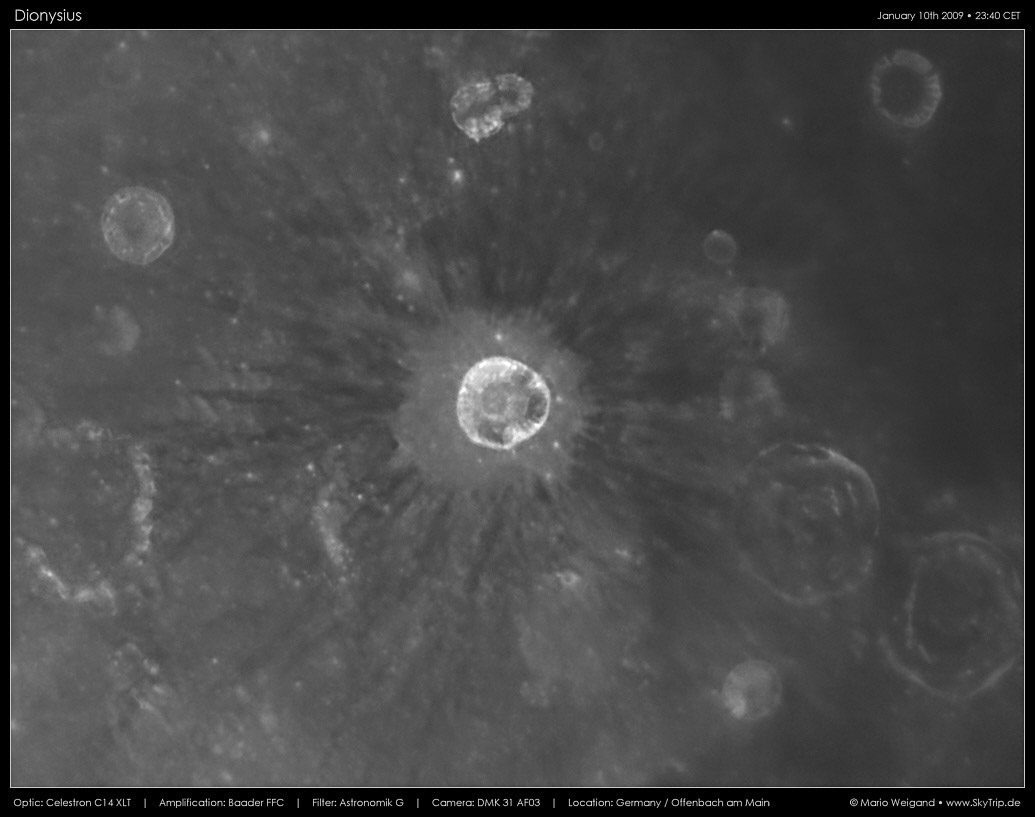June 21, 2018
Another One From the LPOD Photo Gallery
Originally published March 17, 2009

image by Mario Weigand, Offenbach am Main, Germany
This is the best terrestrial view I've seen of one of the most unusual craters on the Moon. No one seemed to notice the dark rays of Dionysius until 1965 when an Air Force officer studying the Moon published an article in the journal Icarus, complete with an actual photographic print because the rays were too faint to see in a half tone reproduction. Eighteen kilometer wide Dionysius is essentially just a big dark halo crater (DHC). Not a volcanic DHC like those in Alphonsus, but a normal impact crater that excavated and ejected buried mare basalts. Most impact DHC are small and are surrounded by dark nimbii, but Dionysius is big enough to have discrete rays, and they are mostly dark. The dark material comes from a layer of basalt that is visible on the south and east walls of the crater. Dionysius is just at the edge of Mare Tranquillitatis and apparently other mare extended under the eastern side of the crater. The large bright patch of ejecta surrounding Dionysius was brought up from deeper, showing that bright anorthositic rocks make up part of the crust there. The details of this story were spectrally disentangled by Tom Giguere and friends. And in Selenology Today issue #9 Rick Evans showed that an amateur could do the same.
Chuck Wood
Technical Details
Dionysius' dark rays are longer and its inner bright deposit is bigger to the west than on the east - do you think Dionysius was an oblique impact?
(and if you want the telescope and camera stuff see the image margin).
Related Links
Rükl plate 35
Yesterday's LPOD: New View, Old Basin
Tomorrow's LPOD: Manning Moon Ball
COMMENTS?
Register, Log in, and join in the comments.



